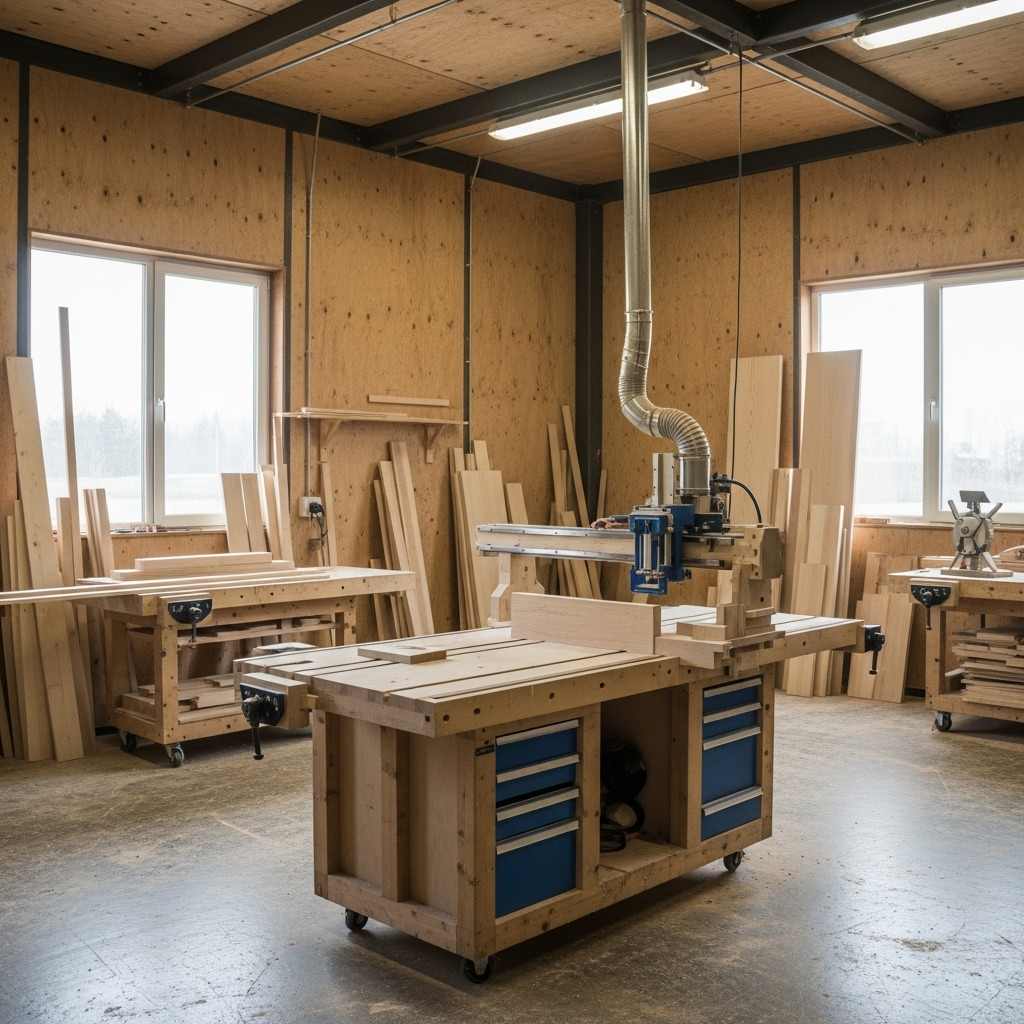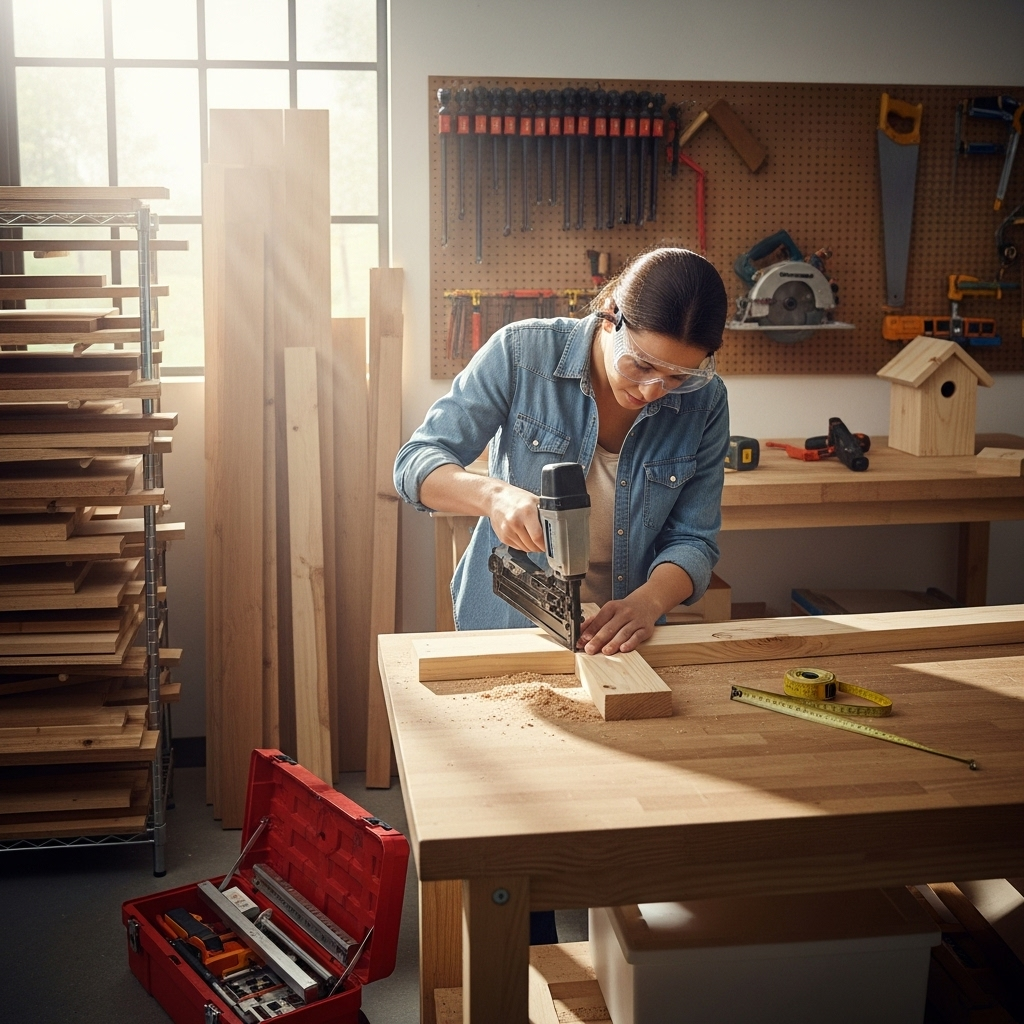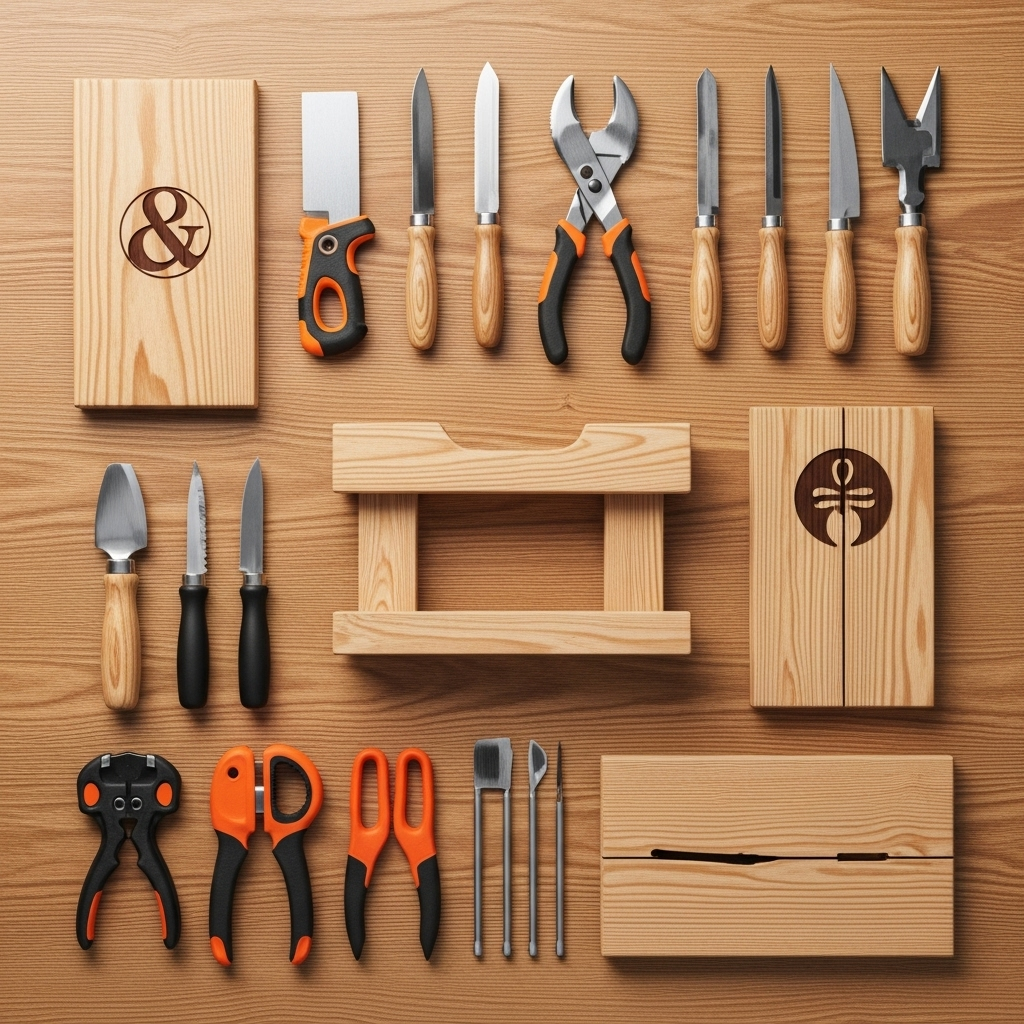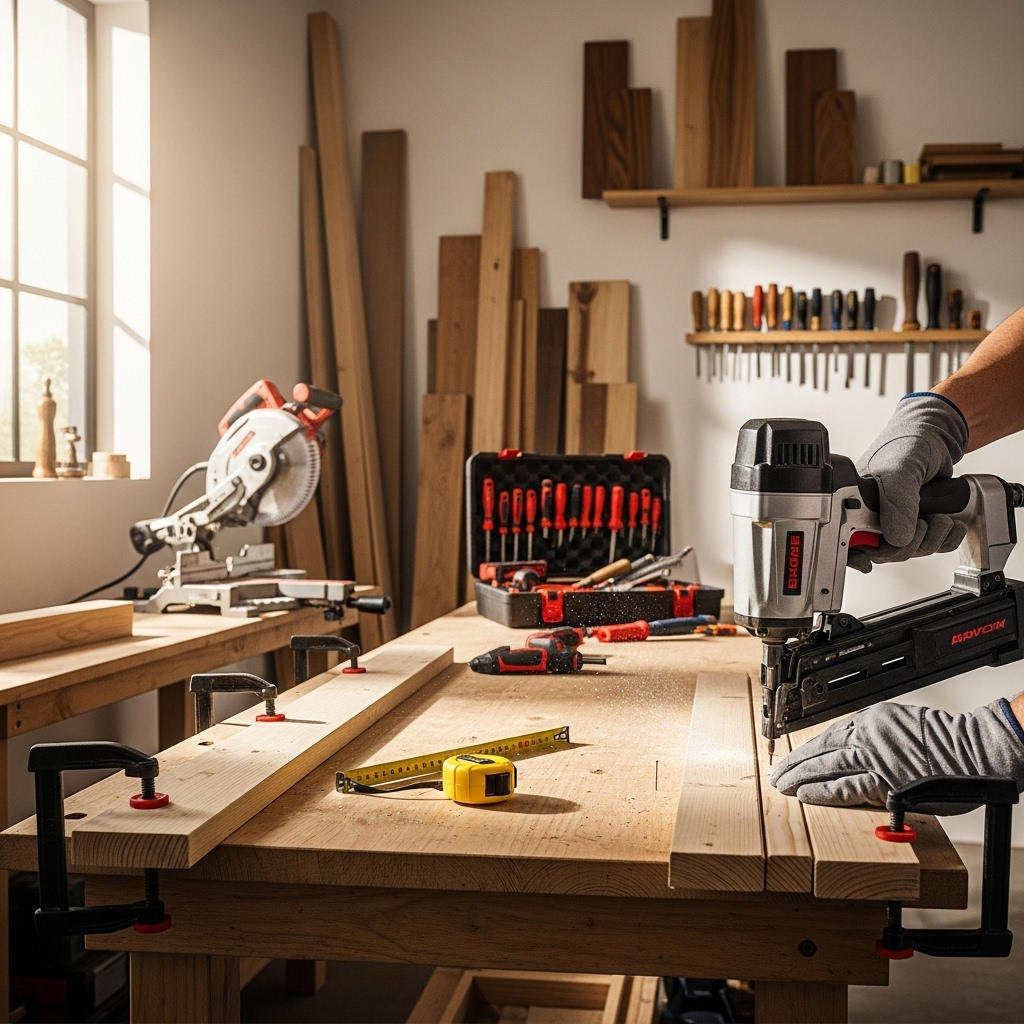Looking for free woodworking projects and tutorials? You’ve come to the right place! This guide highlights the best free resources for DIY woodworking, from simple beginner builds to more advanced projects. Discover easy-to-follow guides, expert tips, and inspirational ideas to get your hands on some wood and start creating.
Hey there, fellow woodworkers and DIY enthusiasts! Jack Shaffer here, your go-to guide for all things nailers, saws, and awesome projects. Ever feel like getting started in woodworking is a bit… overwhelming? Maybe you’ve seen some amazing projects online, but the thought of buying expensive plans or courses holds you back. I get it! But here’s the good news: you don’t need a big budget to start building cool stuff. There are tons of fantastic, free woodworking projects with free video tutorials out there just waiting for you to discover them. We’re talking about everything from a simple birdhouse to a sturdy workbench, all explained step-by-step by people who know their stuff. So, grab your safety glasses, and let’s dive into the world of free woodworking inspiration!
Table of Contents
Why Free Tutorials Are a Woodworker’s Best Friend
As a beginner, navigating the world of woodworking can feel like learning a new language. There are specific tools, techniques, and of course, all the different types of wood! It’s easy to feel like you need to invest a ton of money upfront to even get started. But that’s where the magic of free tutorials comes in. They’re like a friendly neighbor showing you how to hammer a nail straight or cut a perfect line without any pressure.
Free resources offer you a low-risk way to explore your interest. You can try out different types of projects, learn various techniques, and even get afeel for the tools you might need, all without spending a dime on the plans themselves. This means more of your budget can go towards the essential gear, like a good hammer, a reliable saw, or that perfect nailer for your project.
Getting Started: What You Need to Know

Before you jump into that first project, let’s cover a few basics. Safety is always number one in my shop, and it should be in yours too. Always wear safety glasses to protect your eyes. Understand how your tools work, and never use a tool if you’re unsure.
When you’re looking at free tutorials, pay attention to the materials list and the tools required. This will help you budget and plan. Don’t feel like you need the fanciest tools right away. Often, you can start with basic hand tools and upgrade as you go. As you learn more about different projects, you’ll naturally discover which power tools, like a good power tool for specific tasks, will make your life easier.
Finding Your First Free Woodworking Project: Where to Look
The internet is a treasure trove of free information. You just need to know where to dig! Here are some of my favorite places to find fantastic, free woodworking tutorials:
YouTube: The Ultimate Woodworking Hub
YouTube is, hands down, one of the best places for free woodworking projects and tutorials. You can literally find videos for almost anything you can imagine.
Beginner-Friendly Channels: Many creators focus on helping newcomers. They break down steps slowly, explain terminology, and often show common mistakes to avoid. Look for channels that have clear audio and video, and where the presenter speaks clearly.
Project-Specific Searches: Type in exactly what you want to make, like “free birdhouse woodworking tutorial” or “DIY bookshelf plans free video.” You’ll be amazed at the results.
Tool Demonstrations: Even if you’re not ready to buy a specific tool, watching videos on how it’s used can teach you a lot about woodworking techniques.
Woodworking Blogs and Websites
Beyond YouTube, many woodworking blogs and websites offer free plans, guides, and project ideas. Some of my favorites include:
Wood Magazine: They often have free project plans and articles.
This Old House: A classic resource that often features DIY projects with clear instructions.
Popular Woodworking: Similar to Wood Magazine, they offer a wealth of free content.
These sites often have written step-by-step guides, sometimes accompanied by diagrams or photos, which can be a great complement to video tutorials.
Online Woodworking Communities and Forums
Websites like Reddit have communities (subreddits) dedicated to woodworking. Members often share their projects, tips, and sometimes even free plans they’ve found or created. It’s a great way to ask questions too!
Must-Try Free Woodworking Projects for Beginners

Let’s get your hands dirty with some projects that are perfect for starting out. These are often simple, don’t require a huge amount of tools, and provide a great sense of accomplishment.
1. The Classic Birdhouse
Why it’s great: A birdhouse is a classic for a reason! It’s small enough to complete in an afternoon, uses minimal materials, and is a lovely addition to any garden. Plus, you’re helping out our feathered friends.
What you’ll learn: Basic cutting, measuring, assembly, and perhaps some simple joinery.
Tools needed: Saw (hand saw or miter saw), measuring tape, pencil, drill, screws or nails, sandpaper.
Where to find it: Search YouTube for “beginner birdhouse woodworking project” – you’ll find dozens of free, easy-to-follow tutorials.
2. Simple Wooden Crate or Box
Why it’s great: Crates are incredibly versatile. Use them for storage, as a planter, or even as a rustic decorative piece. The basic design is easy to adapt for different sizes.
What you’ll learn: More practice with cutting, joining boards, and creating a sturdy structure.
Tools needed: Similar to the birdhouse: saw, measuring tape, drill, screws, sandpaper. You might also use wood glue for extra strength.
Where to find it: Look for “DIY wooden crate free plans” or “easy storage box woodworking tutorial.”
3. Basic Shelf Unit
Why it’s great: Building a shelf is a fundamental woodworking skill. You can customize the size to fit your space and needs. A simple floating shelf or a small, freestanding unit is a fantastic starter project.
What you’ll learn: Precise measuring and cutting, ensuring pieces are square, and secure assembly for supporting weight.
Tools needed: Saw, measuring tape, level, drill, screws, wood glue, sandpaper. For a floating shelf, you’ll also need specific mounting hardware.
Where to find it: Search for “easy DIY bookshelf plans” or “floating shelf tutorial free.”
4. Cutting Board
Why it’s great: A well-made cutting board is functional and can be beautiful. You can learn about different wood types suitable for food contact and how to finish them safely.
What you’ll learn: Cutting to precise dimensions, gluing boards together (if making a multiple-wood-type board), sanding for a smooth finish, and food-safe finishing techniques.
Tools needed: Good quality lumber, saw, measuring tape, sander, clamps, wood glue, food-safe mineral oil or beeswax finish.
Where to find it: Search for “beginner cutting board woodworking project” or “easy wood cutting board tutorial.”
Upgrading Your Skills: Intermediate Free Woodworking Projects
Once you’ve mastered the basics, you might want to tackle something a little more involved. These projects will introduce you to new techniques and perhaps require a few more specialized tools.
1. Simple Coffee Table
Why it’s great: A coffee table is a substantial piece of furniture that can significantly upgrade your living space. You can find designs that are still relatively simple but look impressive.
What you’ll learn: More complex joinery (like pocket holes or mortise and tenon if you’re feeling adventurous), working with larger pieces of wood, and ensuring stability and a professional finish.
Tools needed: All basics plus potentially a pocket hole jig, a router (for decorative edges), and finish application tools.
Where to find it: Look for “DIY coffee table plans free” or “simple farmhouse coffee table build video.”
2. Workbench
Why it’s great: Every woodworker needs a solid workspace. Building your own workbench is a rite of passage and can be surprisingly affordable using free plans. This project is incredibly practical and will serve you for years.
What you’ll learn: Building a sturdy, functional piece of furniture designed for heavy use. You might learn about different leg designs and how to create a robust top.
Tools needed: A range of tools, potentially including a table saw for accurate cuts on larger pieces, a miter saw, drills, and lots of screws.
Where to find it: Search for “free workbench plans” or “DIY garage workbench tutorial.” Many plans are available from sites like Instructables and various woodworking blogs.
3. Adirondack Chair
Why it’s great: This iconic chair is a rewarding project. While it has more angles and pieces than a simple box, many free plans break it down clearly.
What you’ll learn: Cutting curves, assembling a more complex structure with multiple angles, and creating comfortable, ergonomic furniture.
Tools needed: Saw (jigsaw is helpful for curves), measuring tape, drill, screws, sandpaper, potentially a protractor for angles.
Where to find it: Search for “Adirondack chair plans free” or “DIY Adirondack chair video tutorial.”
Essential Tool Considerations for Beginners

When you’re starting with free tutorials, you don’t need a workshop full of expensive machines. Focus on a few key tools that are versatile and good quality.
Here’s a breakdown of what I’d recommend, with an eye on balancing cost and capability:
| Tool Category | Recommended Beginner Tool(s) | Why it’s essential |
| :—————- | :—————————————————————————————- | :———————————————————————————————————————————————— |
| Measuring & Marking | Tape Measure, Pencil, Combination Square | Accuracy is key! You need to measure twice and cut once. A square helps ensure your cuts and pieces are at the correct angles. |
| Cutting | Hand Saw (crosscut and rip), or a basic Cordless Circular Saw (with a guide) | For basic projects, a good hand saw can do wonders. A circular saw is a step up for faster, straighter cuts on lumber. Safety first! |
| Fastening | Hammer, Screwdriver Set (Phillips and Flathead), Cordless Drill/Driver (with drill bits) | Driving screws is often easier and stronger than nailing for beginners. A drill can also pre-drill holes to prevent splitting wood. |
| Shaping & Smoothing | Sandpaper (various grits: 80, 120, 220), Sanding Block | Essential for a smooth finish. Start with coarser grits for rough spots and move to finer grits for a polished feel. |
| Assembly Aids | Wood Glue, Clamps (at least 2-4) | Glue adds significant strength to joints. Clamps hold pieces together while the glue dries, freeing up your hands. Bar clamps or spring clamps work well. |
Important Note on Nailers: While many projects can be done with screws, a brad nailer or finish nailer can be a fantastic addition for faster assembly and a cleaner look, especially for trim or smaller projects. Many beginner tutorials will show how to use these, but they aren’t strictly necessary to start. You can always get one later as your projects get more detailed.
Pro Tips for Following Free Woodworking Tutorials
Even with the clearest instructions, a few tips can make your woodworking journey smoother and more enjoyable.
Watch the Whole Video First: Before you even pick up a tool, watch the entire tutorial from start to finish. This gives you a good overview of the project, helps you anticipate steps, and understand the final result.
Read the Comments: Watch for comments below the video. Other viewers often share helpful tips, ask questions you might have had, or point out potential issues or clarifications.
Gather All Materials and Tools: Make sure you have everything listed in the tutorial before you start cutting or assembling. Nothing is more frustrating than being halfway through a project and realizing you’re missing a key screw or piece of wood.
Measure Twice, Cut Once: I know, it’s a cliché, but it’s true! Taking that extra moment to double-check your measurements can save you a lot of frustration and wasted material.
Don’t Aim for Perfection (at first): Your first few projects might not be flawless. That’s okay! Focus on learning the process and gaining confidence. Every project is a learning experience, and your skills will improve with practice.
Safety First, Always: I can’t stress this enough. Wear your safety glasses, use tools properly, and make sure your workspace is clear and well-lit. If a tutorial involves a tool you’re not comfortable with, look for simpler alternatives or watch more videos on that specific tool. Visit sites like the Occupational Safety and Health Administration (OSHA) for general workplace safety guidelines.
Beyond the Project: Finishing and Presentation

Once your project is assembled, the finishing touches make all the difference.
Sanding: This creates a smooth surface. Start with a lower grit (like 80 or 120) to remove rough spots and tool marks, then move to higher grits (like 220) for a silky-smooth feel. Always sand in the direction of the wood grain.
Finishing: This protects the wood and enhances its beauty.
Paint: Great for a splash of color and can hide minor imperfections. Use a primer first for best results.
Stain: Adds color while letting the wood grain show through.
Varnish/Polyurethane: Provides a durable, protective clear coat.
Oil Finish (e.g., mineral oil, tung oil): Penetrates the wood for a natural look and feel, often used on cutting boards or furniture.
Most tutorials will guide you on the best finishing methods for their specific project. Pay attention to their recommendations for your particular wood type and its intended use.
Frequently Asked Questions About Free Woodworking Projects
What are the absolute must-have tools for a beginner woodworker using free tutorials?
For starting out with most free beginner tutorials, you’ll definitely want: a tape measure, pencil, combination square, a good hand saw (or a basic circular saw), a hammer, a screwdriver set, a cordless drill/driver with bits, sandpaper (various grits), wood glue, and a couple of clamps. These will cover a surprising range of simple projects.
How do I know if a free tutorial is reliable?
Look for tutorials with high view counts and positive comments on platforms like YouTube. Creators who have a clear teaching style, show all the steps, and explain why they’re doing things are usually reliable. Reputable woodworking websites and magazines also offer trusted free content.
Can I really build furniture without expensive tools?
Yes, absolutely! While power tools speed things up and offer more precision for advanced techniques, many basic furniture pieces can be built with hand tools or a few essential power tools like a drill and a circular saw. Many free plans are designed with accessible tools in mind.
What is the best type of wood for beginners to use?
Pine is a fantastic choice for beginners. It’s relatively inexpensive, widely available, soft enough to work with easily, and it takes finishes well. Avoid hardwoods initially, as they can be tougher to cut and more prone to splitting.
How much lumber do I typically need for a simple project like a birdhouse or small shelf?
For very small projects like a birdhouse, you might only need a single board, perhaps 1×6 lumber about 4-6 feet long. For a simple shelf or small crate, you might need a few more feet of lumber, depending on the dimensions. Always check the materials list in the tutorial!
What’s the difference between nails and screws in woodworking projects?
Screws generally provide a stronger hold and are easier for beginners to control, especially with a drill/driver. They are also removable. Nails are faster for assembly, particularly with a nail gun, but can be trickier to drive straight and offer less holding power unless used in conjunction with wood glue. For most beginner projects, screws and glue are often preferred.
Wrapping Up Your Woodworking Journey
See? Getting started in woodworking doesn’t have to break the bank! By leveraging the power of free tutorials, you have access to a world of knowledge and inspiration right at your fingertips. Whether you’re aiming to build a simple birdhouse to brighten up your garden, a sturdy shelf to organize your space, or even a functional workbench for your future projects, there’s a free guide out there for you.
Remember to always prioritize safety, be patient with yourself, and most importantly, have fun. Every cut, every joint, and every finished piece is a step forward in your woodworking adventure. So dive in, explore those woodworking projects with free video tutorials, and start making something amazing. I can’t wait to see what you build! Happy woodworking!